Complete Solutions to Exercise 1.1 of chapter CENTRE OF MASS of Class 11 book with complete answers and questions
| Class 11 | PHYSICS |
| Chapter | CENTRE OF MASS |
| CENGAGE PHYSICS | Exercise 1.1 |
| Number Of Questions | 20 |
| Academic Year | 2023-24 |
Two children `A` and `B` of same mass (including their caps) `M` are sitting On a see-saw as shown in Fig. Initially, the beam is horizontal. At once, child `B` throws away his cap (mass `M/25`) which falls at point `Q`, midpoint of the left half of the beam, due to this the balance of beam is disturbed. To balance it again what is the mass in required to be put at point `P` on the right half of the beam?
 03:40View Solution
03:40View SolutionTwo blocks `A` and `B` each of equal masses `m` are rleased from the top of a smooth fixed wedge as shown in the figure. Find the magnitude of the accelertion of the centre of mass of the two blocks.
 03:52View Solution
03:52View SolutionConsider a rectangular plate of dimensions `axxb`. If this plate is considered to be made up of four rectangles of dimensions `a/2xxb/2` and we now remove one out of four rectangles. Find the position where the centre of mass of the remaining system will lie?
 05:18View Solution
05:18View SolutionThere are two masses `m_1` and `m_2` placed at a distance `l` apart. Let the centre of mass of this system is at a point named C. If `m_1` is displaced by `l_1` towards C and `m_2` is displaced by `l_2` away from C. Find the distance, from C where new centre of mass will be located.
04:24View SolutionLet there are three equal masses situated at the vertices of an equilateral triangle, as shown in Fig. Now particle `A` starts with a velocity `v_(1)` towards line `AB`, particle `B` starts with the velocity `v_(2)`, towards line `BC` and particle `C` starts with velocity `v_(3)` towards line `CA`. Find the displacement of the centre of mass of the three particles `A, B` and `C` after time `t`. What would it be if `v_(1)=v_(2)=v_(3)`?
 02:37View Solution
02:37View SolutionFigure shows a flat car of mass `M` on a frictionless road. A small massless wedge is fitted on it as shown. A small ball of mass `m` is released from the top of the wedge, it slides over it and falls in the hole at distance `l` from the initial position of the ball. Find the distance the flat car moves till the ball gets into the hole.
 02:16View Solution
02:16View SolutionFigure shows two blocks of masses `5 kg` and `2 kg` placed on a frictionless surface and connected with a spring. An external kick gives a velocity of `14 m//s` to the heavier block in the direction of lighter one. Deduce (a) velocity gained by the centre of mass and (b) the separate velocities of the two blocks in the centre of mass coordinates just after the kick.
 02:53View Solution
02:53View SolutionTwo blocks of masses `m_(1)` and `m_(2)`, connected by a weightless spring of stiffness `k` rest on a smooth horizontal plane as shown in Fig. Block 2 is shifted a small distance `x` to the left and then released. Find the velocity of centre of mass of the system after block 1 breaks off the wall.
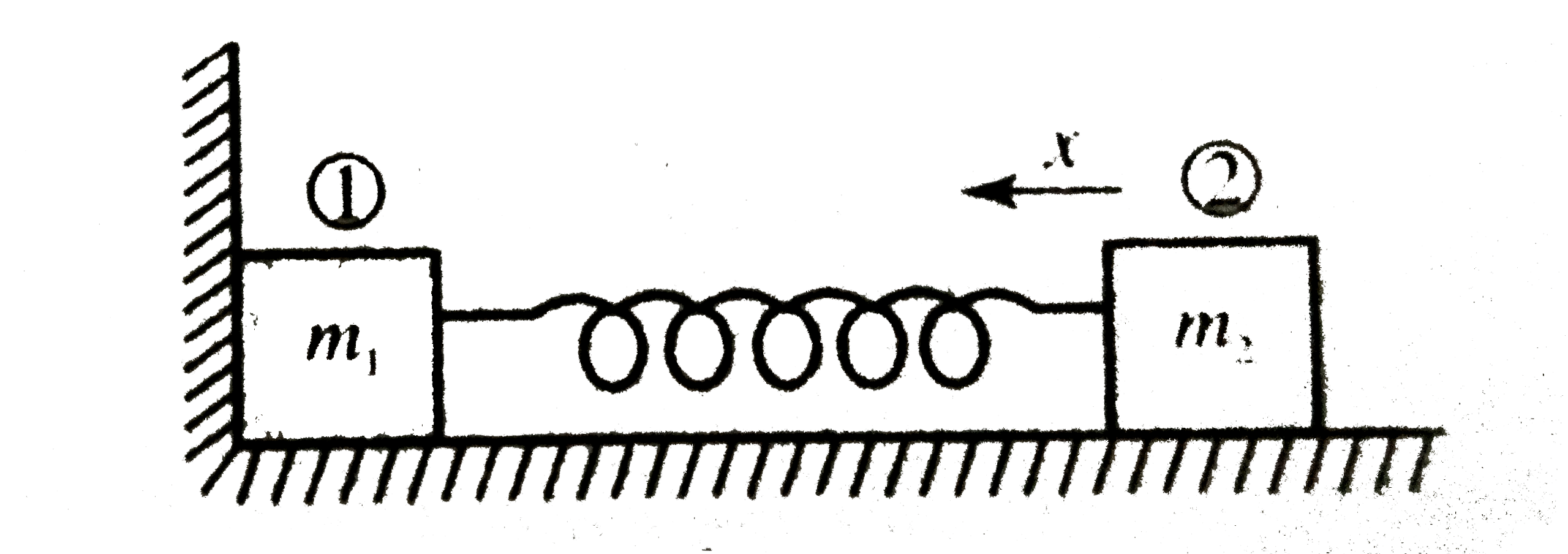 03:30View Solution
03:30View SolutionMr. Verma (50kg) and Mr. Mathur (60kg) are sitting at the two extremes of a 4 m long boat (40 kg) standing still in water. To discuss a mechanics problem, they come to the middle of the boat. Neglecting frictioin with water how far does the boat move on the water during the process?
06:11View SolutionA cart of mas M is at rest on a frictionless horizontal surface and a pendulum bob of mass m hangs from the roof of the cart figure. The string breaks, the bob falls on the floor, makes several collision on the floor and finally lands up in a small slot made in the floor. The horizontal distance between the string and the slot is L. Find the displacement of the cart during this process
 04:18View Solution
04:18View SolutionFind the displacement of the wedge when `m` comes out of the wedge. There is no friction anywhere.
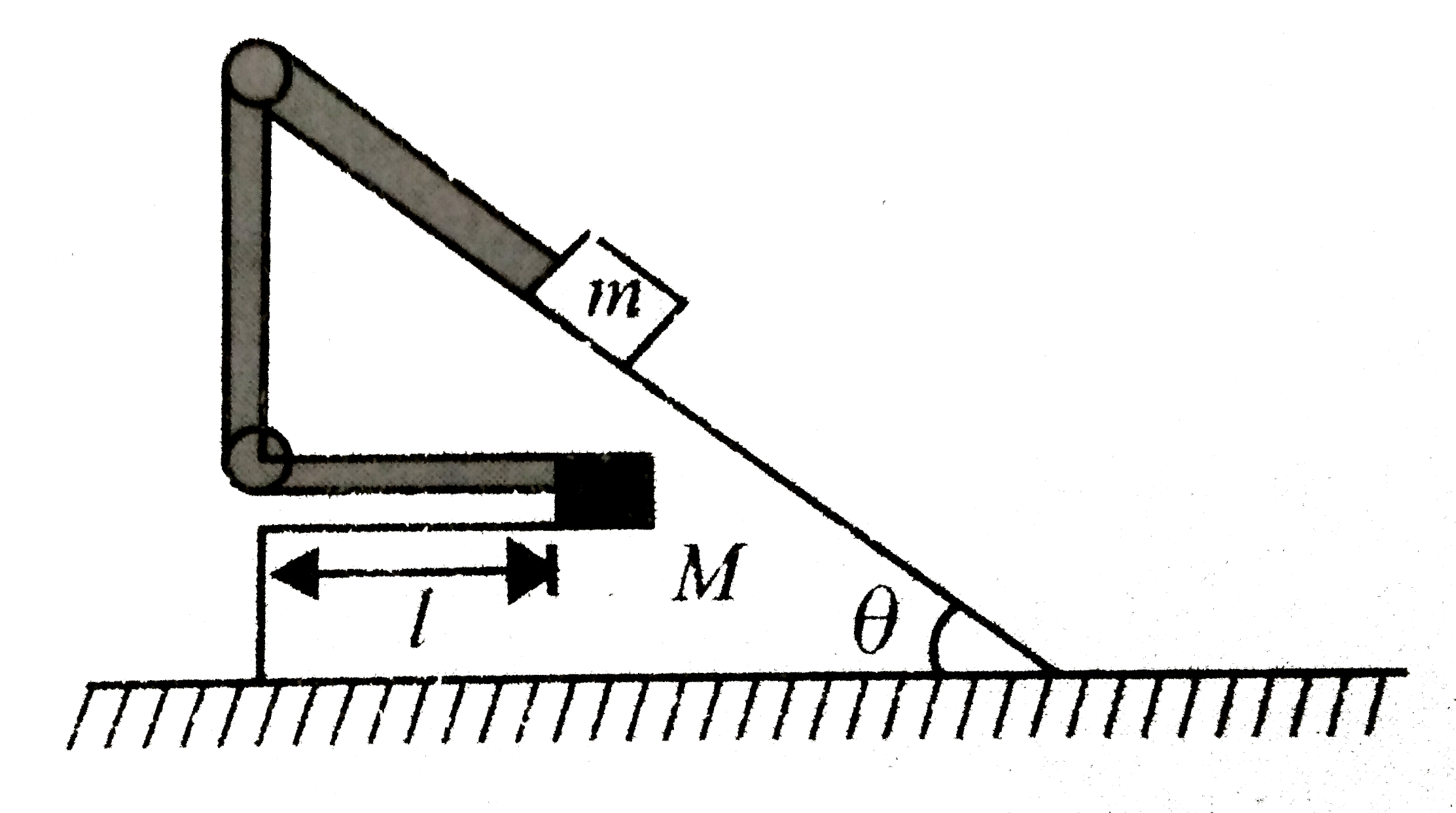 09:15View Solution
09:15View SolutionA block of mass m is released from the top of a wedge of mass M as shown in figure. Find the displacement of wedges on the horizontal ground when the block reaches the bottom of the wedges. Neglect friction everywhere.
 04:47View Solution
04:47View SolutionCalculate the displacement of the wedge when the hall reaches at the bottom of the groove,
 02:21View Solution
02:21View SolutionA block is released on the convex surface of a hemispherical wedge as shown in Fig. Determine the displacement of the wedge when the block reaches the angular position `theta`
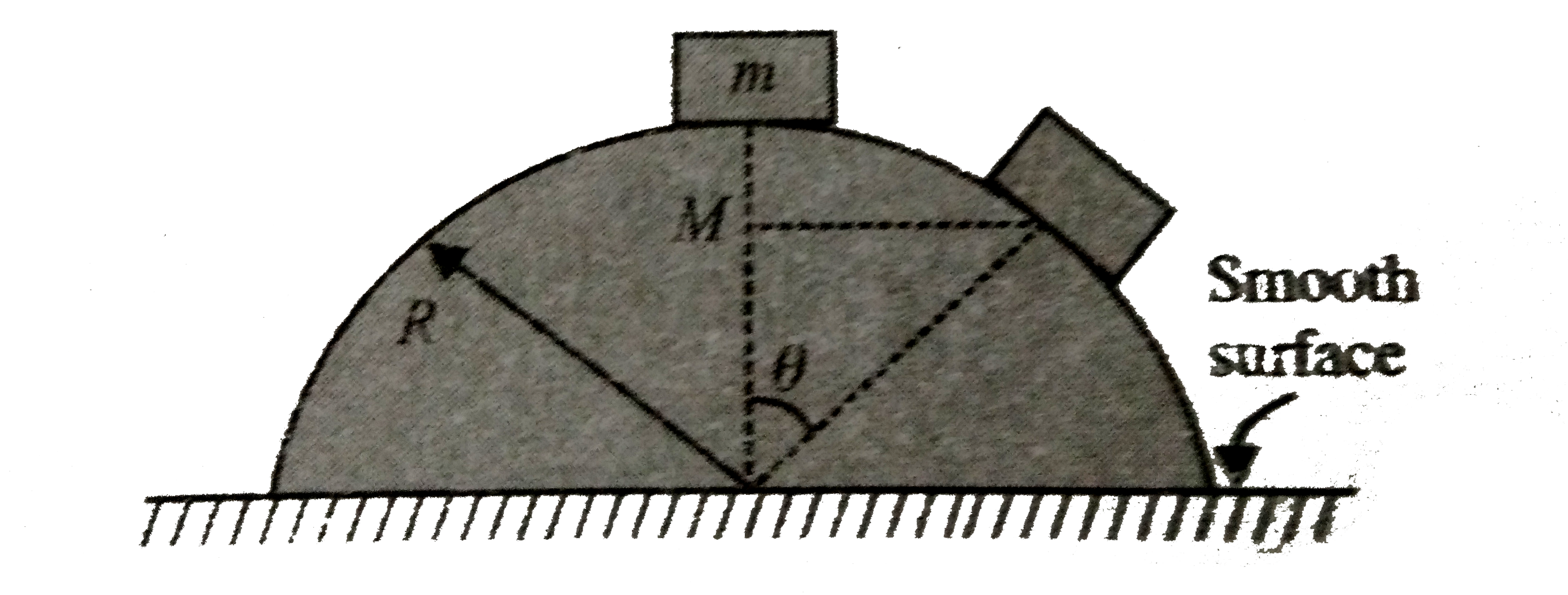 01:54View Solution
01:54View SolutionTwo masses, `m_(1)` and `m_(2)` , are moving with velocities `v_(1)` and `v_(2)`. Find their total kinetic energy in the reference frame of centre of mass.
06:11View SolutionFigure shows the system is at rest initially with `x = 0`, A man and a woman both are initially at the extreme carrier of the platform. The man and the woman start to move towards each other. Obtain an expression for the displacement `s` of the platform when the two meet in terms of the displacement `x_1` of the man relative to the platform. `
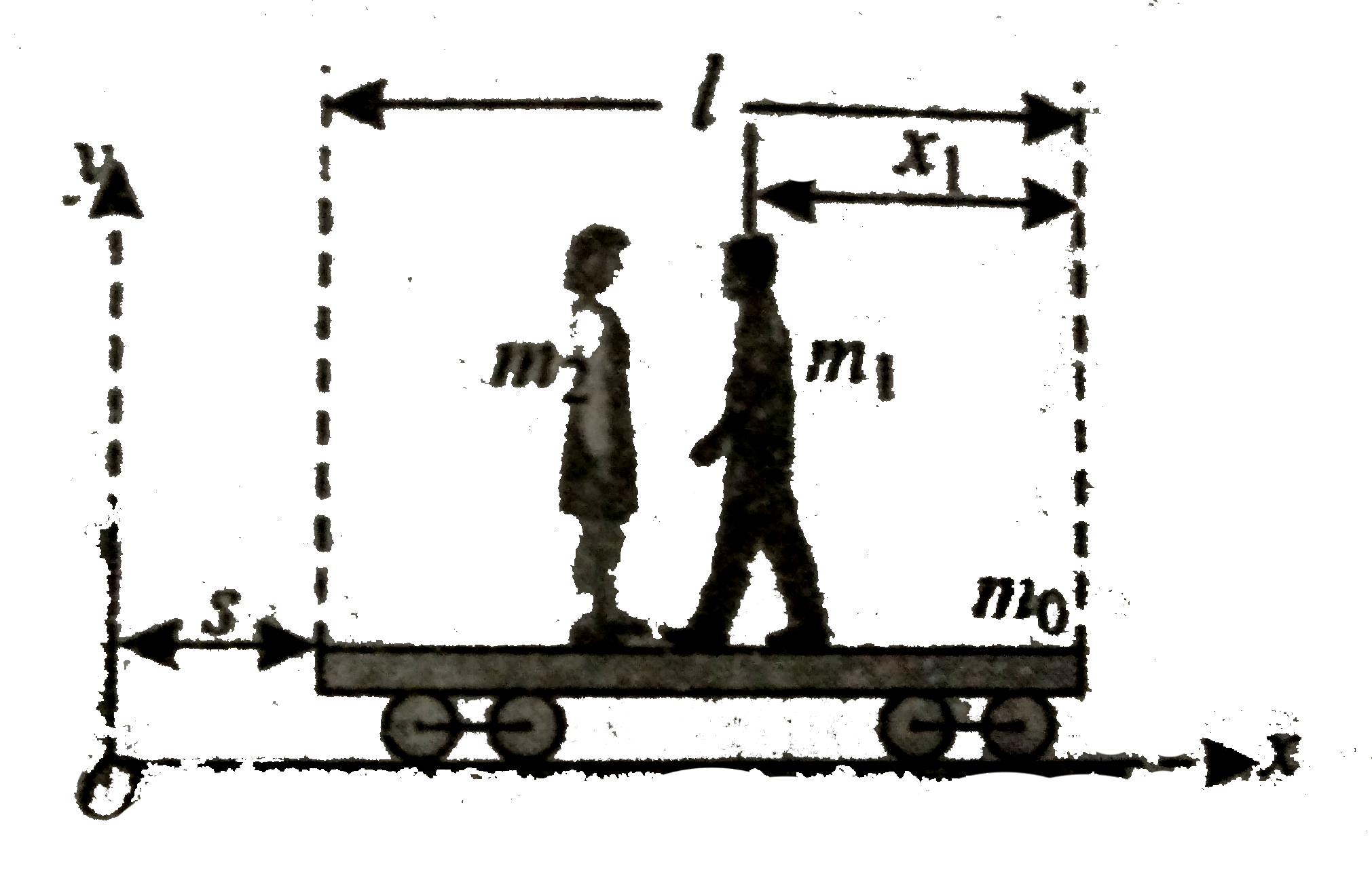 04:09View Solution
04:09View SolutionA `30 kg` projectile moving horizontally with a velocity `vecv_(0)=(120m//s)hati` explodes into two fragments `A` and `B` of masses `12 kg` and `8 kg`, respectively. Taking point of explosion as origin and knowing that `3s` later position of fragment a is (`300m, 24m, -48m`), determine the position of fragment `B` at the instant.
04:23View SolutionTwo `20 kg` cannon balls are chained together and fired horizontally with a velocity of `200 m//s` from the top of a `30 m` wall. The chain breaks during the flight of the cannon balls and one of them strikes the ground at `t=2s`, at a distance of `250 m` from the foot fo the wall, and `5 m` to the right of line of fire determine the position of the other cannon ball at that instant Neglect the resistance of air.
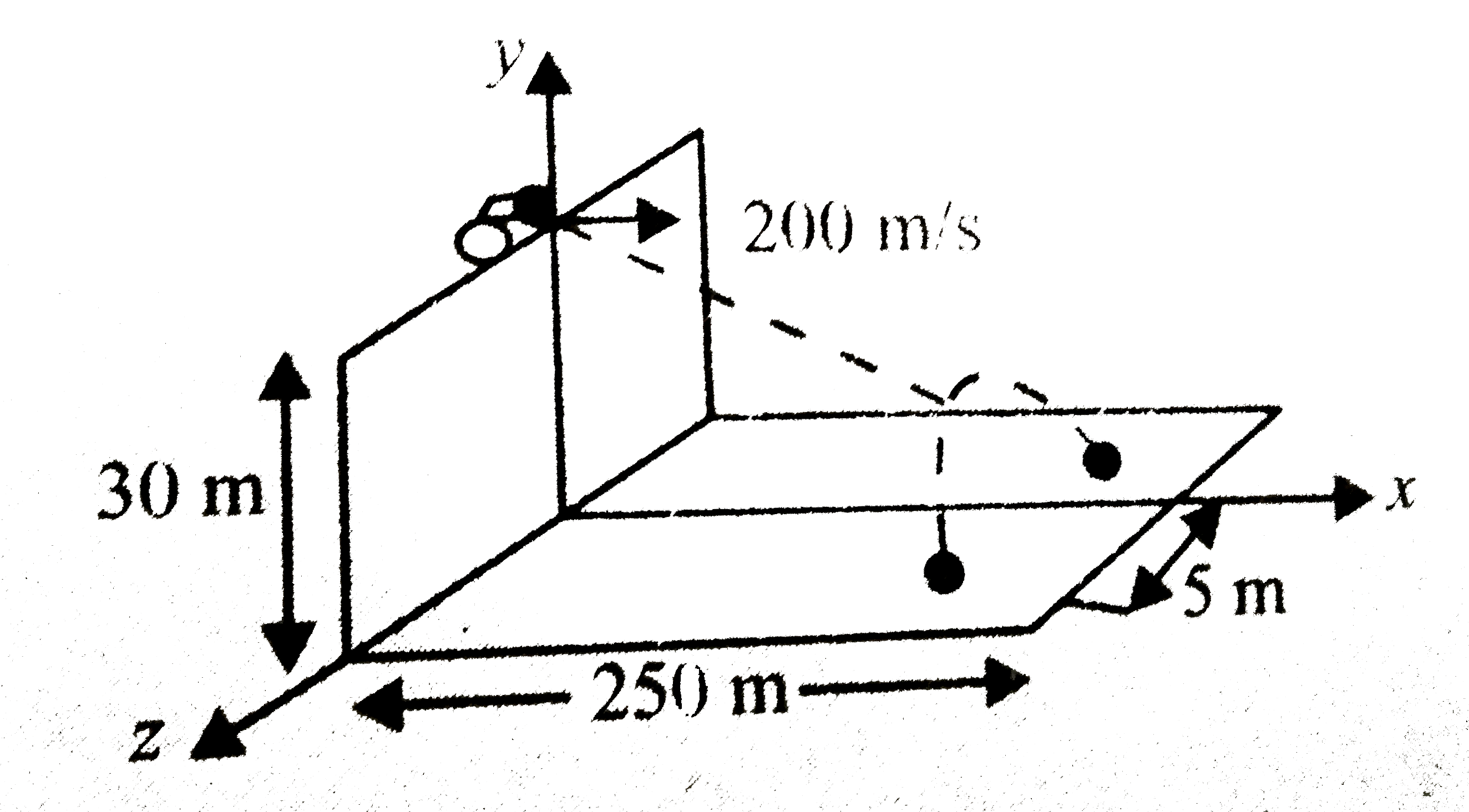 06:30View Solution
06:30View SolutionA juggler juggles three balls in a continuous cycle. Any one ball is in contact with his hand for one-fifth of the time. Describe the motion of the centre of mass of the three balls. What average force does the juggler exert on one ball while he is touching it?
03:02View SolutionA cannon and a supply of cannon balls are inside a sealed rail road car. The cannon fires to the right, the car recoils to the left. The canon balls remain in the car after hitting the far wall. Show that no matter how the cannon balls are fired, the rail road car cannot travel more than `L`. assuming it starts from rest.
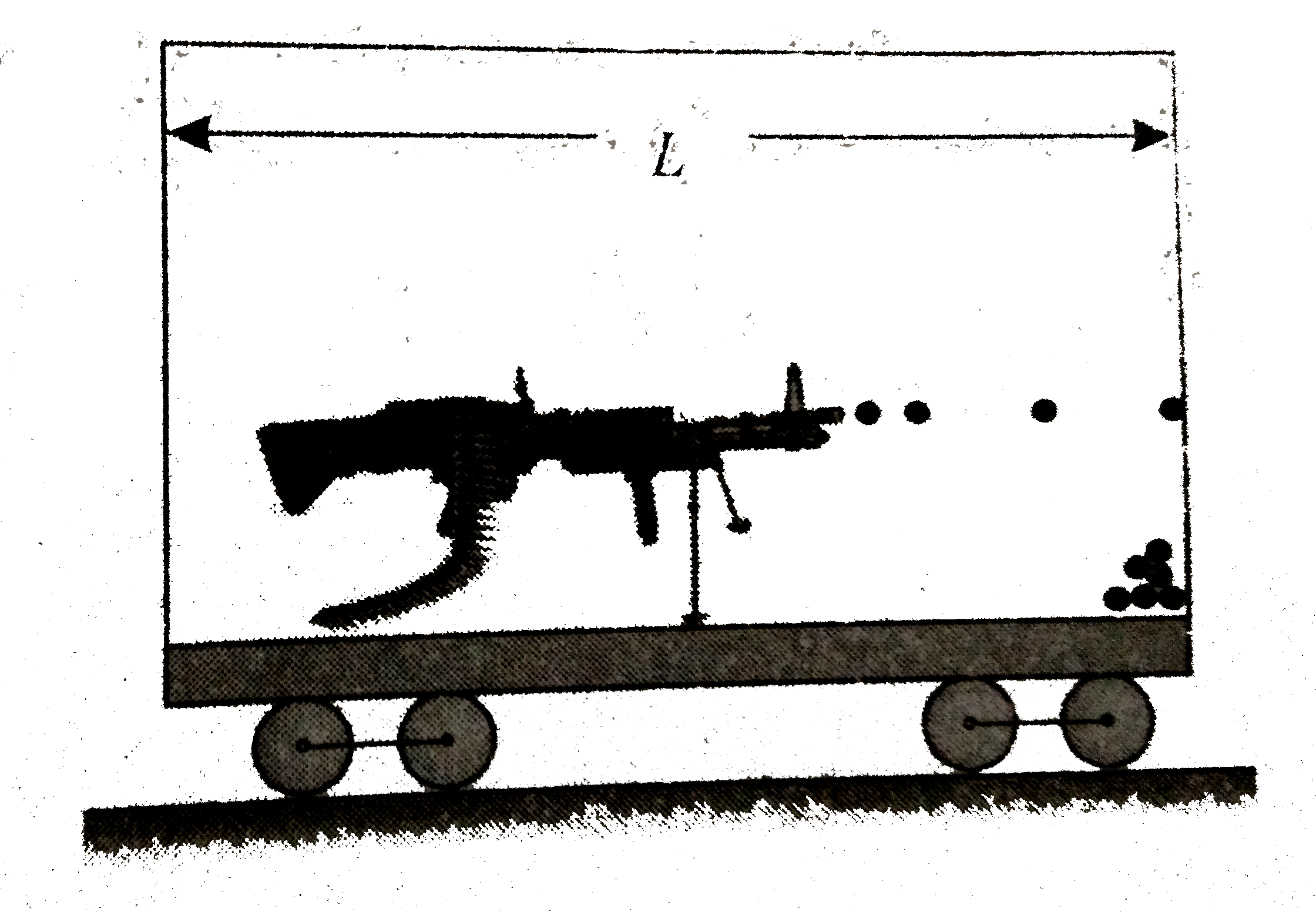 04:29View Solution
04:29View Solution
Exercise 1.1 questions and complete solutions for chapter CENTRE OF MASS of CENGAGE PHYSICS (ENGLISH) of Class 11
